Kenneth L. Gentry Jr.'s Blog, page 12
September 6, 2024
INTRODUCING THE TWO WITNESSES (5)
 PMW 2024-070 by Kenneth L. Gentry, Jr.
PMW 2024-070 by Kenneth L. Gentry, Jr.
Though this is my fifth study on the identity of John’s two witnesses, I come now to my fourth point. This should be read in tandem with the preceding study.
Fourth, further confirming this approach is the two witnesses’ prophetic fire-and-blood imagery (11:5– 6; cp. Eze 21:32; 38:22; Joel 2:30), the joyful reaction to their death by “those who dwell in the Land [of Israel]” (11:7, 9–10), and the “torment” they cause their Jerusalem hearers (11:10; cf. v 8). The temple and Jerusalem will suffer fiery destruction (Mt 22:7; Ac 2:19–20). The witnesses are not simply gospel preachers, or else they would not be deemed tormentors. Rather, they are functioning as covenant-lawsuit prophets challenging the integrity of the central feature of Judaism: the temple. In Revelation the word-group for “torment” elsewhere speaks of extreme pain and agony, not annoyance or frustration. Thus, some scholars argue that “the two witnesses do not symbolize the preaching of the Gospel in general . . . They are the incarnation of the witness which the Church renders to Christ in the face of a Judaism grown obstinate in its unbelief.”
I would add to this observation that their witness promotes the word of Christ against the temple which the Jews so dearly love, and which figures prominently in Christ’s trial (Mt 26:59–61; 27:40; Mk 14:58–59), as well as in Stephen’s (Ac 6:13–14). Another observes in this regard that: “well may we suppose that Christians . . . urged the declarations of the Saviour as to the impending fate of Jerusalem.” He points out (2:227) that the two witnesses “were prophets in the church, predicting the destruction of the temple and the Jewish commonwealth.” Elsewhere we learn that: “putting the synoptic and Johannine evidence together — and the two appear to be independent — we have a strong presumption that Jesus did say something about the destruction and replacement of the temple.”
The extreme Jewish zeal for the temple is well-known and amply documented in ancient sources: 1 Macc 2:19–22; 3:12; 5:15; 14:31; Aristeas 83–87; Philo, Spec. Laws 1:13 §72–73; Embassy 29 §191, 198; Jos., Ant. 13:3:4 §77–78; J.W. 6:4:7–8 §260–67. They fiercely protect their holiest place, as we see in: Philo (Embassy 32 §232–33), Josephus (Ant. 14:16:2 §470; 17:6:2 §151–52; 18:8:2–3 §261–72; J.W. 2:9:4 §175–77; 4:3:9–10 §158–92; 6:1:7 §73–74; 6:4:5 §253), Tacitus (His. 5:9), Dio (49:22:3–5; 69:12:1–2), and 2 Macc 15:18; 18:20ff.
This is why that after Stephen’s preaching against the temple (Ac 7:48–50) and Israel (Ac 7:51–53), the Jews turn violently upon him: “Now when they heard this, they were cut to the quick [lit. “to the hearts,” tais kardiais], and they began gnashing their teeth at him. . . . They cried out with a loud voice, and covered their ears and rushed at him with one impulse. When they had driven him out of the city, they began stoning him; and the witnesses laid aside their robes at the feet of a young man named Saul” (Ac 7:54, 57–58). They consider Stephen’s preaching torment (“they were cut to the quick,” Ac 7:54), not annoying (as for example in Ac 2:13, and among the Gentiles at Ac 17:18, 32), which matches with the tormented anger of those in Jerusalem against the two witnesses (Rev. 11:10c).
House Divided: The Break-up of Dispensational Theology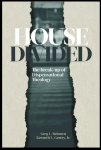 By Greg Bahnsen and Ken Gentry
By Greg Bahnsen and Ken Gentry
This book presents and defends Christian Reconstruction theology, particularly theonomic ethics and postmillennial eschatology. It does to by responding to dispensationalism’s social and exegetical theology.
For more educational materials: www. KennethGentry.com
Fifth, most scholars agree that John specifically models the two witnesses after Moses and Elijah (11:5–6; cp. 1Ki 17:1; Ex 7:17), who represent the law and the prophets, i.e., the old covenant (Mt 5:17; 7:12; 11:13; 31:42; 22:40; Lk 24:44; Jn 1:45; Ac 13:15; 24:14; 26:22–23; 28:13). The law and the prophets testify about Christ (Mt 26:54–56; Jn 5:39; Lk 24:25-27) and against Israel (Mt 15:7–9; Lk 16:31; Jn 5:45–47; Ac 13:27). For instance, Jesus warns Israel: “Do not think that I will accuse you before the Father; the one who accuses you is Moses, in whom you have set your hope” (Jn 5:45; cp. Jn 7:19–20). He declaims their treatment of the prophets God sends to them: “you testify against yourselves, that you are sons of those who murdered the prophets” (Mt 23:31; cp. 5:12).
Sixth, further indicating that the two prophets speak of judgment on geo-political Israel — and especially on their holy temple and capital city — is the heavenly response to their ministry under Israel’s resistance. Upon their deaths and their reception into heaven (11:11–13) we hear that the kingdom of the Lord has conquered — despite Israel’s opposition to Christ and his two prophets — and that “Christ . . . will reign forever” (11:15). This kingdom victory of Christ comes as a “reward” to “Your bond-servants the prophets” (11:18). Then as a consequence of the casting out of the earthly temple and the trampling of its host city, Jerusalem (11:2), along with the two witnesses’ prophetic denunciation of the temple, the heavenly temple opens (11:18). The message of the two witness-prophets prevails.
Seventh, in the vision’s imagery, the two prophets engage in fiery speech: fire “flows out of their mouth and devours their enemies” (11:5). This well fits the idea of judgment language: Jeremiah’s proclaiming God’s judgment on Israel makes his words a fire (Jer 5:14). The general theme of fiery judgment regarding Christ’s coming is familiar to the first Christians, both in speaking of his metaphorical coming in wrath in AD 70 and his literal coming in judgment at the end of history (e.g., Ac 2:19; 2Th 1:7; Heb 10:27; Jas 5:3, 9; 2Pe 3:7; Jude 7). In fact, such fiery-judgment language is prominent enough in early Christianity that Nero accuses Christians of causing the burning of Rome. In AD 64 he condemns them on “the charge of [being] incendiaries” and then “fastened [them] to crosses to be set on fire, that when the darkness fell they might be burned to illuminate the night” (Tac., Ann. 15:44). In the exposition of Revelation 13 I will show how the Jews urge Nero’s persecution of Christians.
[image error]For more information and to order click here.
" data-image-caption="" data-medium-file="https://postmillennialworldview.com/w..." data-large-file="https://postmillennialworldview.com/w..." tabindex="0" role="button" class="alignright size-full wp-image-209" src="https://postmillennialworldview.com/w..." alt="Navigating the Book of Revelation: Special Studies on Important Issues" />Navigating the Book of Revelation (by Ken Gentry)
Technical studies on key issues in Revelation, including the seven-sealed scroll, the cast out temple, Jewish persecution of Christianity, the Babylonian Harlot, and more.
See more study materials at: www.KennethGentry.com
Eighth, we also know from Jewish records that the early Christians do denounce the temple. We not only see Jewish complaints about this in the NT itself, but elsewhere. For instance, in t. Sanh. 13:4–5 the statement “those who have stretched out their hands against Zebul” is discussed one scholar of ancient Judaism: “It is explained in the Tosefta itself that Zebul (habitation) denotes the temple. The whole passage seems to be directed against heresy in some form, we may perhaps interpret this clause of those who, like the Christians, repudiated the claim of the temple to be the place where alone worship could be duly and perfectly offered.”
Still another notes that “persecution occurred when Christians challenged the symbols of ethnic solidarity so sharply that they placed themselves beyond the tolerance-limits of the Jewish community.” The Jews, therefore, seek capital punishment for any who speak against or defile the temple, not only in Jeremiah’s day (Jer 26:7–8, 11; Ant. 10:6:2 §89–92) but also in the first century (Ac 6:14; 21:26–30; 24:6; 25:7–8; t. Sanh. 13:5; t. Ros. Has. 17a; t. Ber. 9:13b). Thus, we should understand that the “controversy about the temple was evidently the occasion for the first major persecution of Christians (Acts 6–8).”
Thus ends the reading of my thoughts on the identity of the two witnesses. So far.
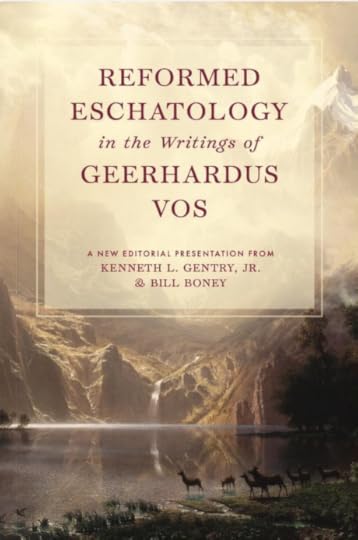 Reformed Eschatology in the Writings of Geerhardus Vos, edited by Kenneth L. Gentry, Jr. and Bill Boney, is available for pre-orders now. https://axeheadpress.com/products/reformed-eschatology-in-the-writings-of-geerhardus-vos
Reformed Eschatology in the Writings of Geerhardus Vos, edited by Kenneth L. Gentry, Jr. and Bill Boney, is available for pre-orders now. https://axeheadpress.com/products/reformed-eschatology-in-the-writings-of-geerhardus-vos
September 4, 2024
NEW BOOK: VOS ON ESCHATOLOGY
 NOTE FROM KEN GENTRY
NOTE FROM KEN GENTRY
Bill Boney and I have taken several of Geerhardus Vos’ most insightful studies on eschatology and brought them into this one book. But we did not simply cut-and-paste Vos’ articles: we updated their early 19th century style and grammar to fit with 21st century publishing standards. We did not change any of Vos’ arguments in the process. If you love Vos, you will love this updated version of his eschatological writings. This book will ship in October but can be pre-ordered today at: https://axeheadpress.com/products/reformed-eschatology-in-the-writings-of-geerhardus-vos
NOTE FROM THE PUBLISHER, AXEHEAD PRESS
Our latest title Reformed Eschatology in the Writings of Geerhardus Vos, edited by Kenneth L. Gentry, Jr. and Bill Boney, is available for pre-orders now. (Get your copy while it is called “today”!)
In this quick email, I’d like to share something I personally found interesting from reading this book.
A key element of Vos’s thought is that Paul’s doctrine of the future is foundational to the four main strands of thought in his writings—resurrection, salvation, judgment and justification, and the Holy Spirit.
It seems like we’d think of eschatology as being the future consummation of present realities—meaning, that the future flows from the present—but in Paul’s thought, it was the reverse. Vos adds, “Living, then, in a world of semi- futurities there is every reason to expect that the thought of the earliest Christians should have moved backwards from the anticipated attainment in its fulness to the present partial experiences and interpreted these in terms of the former” (p. 43).
Eschatology isn’t something to be tacked on as the last bit of systematic theology; it’s actually the starting point, not the ending point, of a number of doctrines.
In Chapter 2, “The Interaction Between Eschatology and Soteriology,” Vos investigates this idea, and I want to explore some of his points.
I can’t possibly do his complex thought and argument justice in this email, so let this serve as an encouragement for you to pick up your own copy.
RESURRECTION (pages 42–49)
Vos writes that “Christ through his resurrection is the firstfruits of them that sleep (1 Cor. 15:20)”.
He points out that this can’t be metaphorical, based on other passages from Paul, and that “the phrases ‘to be raised in or with Christ’ can bear only the one meaning: to have through a radical change of life one of the two fundamental acts of eschatology applied to one’s self.”
The man or woman who has become “in Christ” has truly undergone a real resurrection! But, Vos continues,
Talking about 2 Corinthians 5:17, “Wherefore if any man is in Christ, he is a new creature,” Vos writes:
“The context clearly shows that Paul in Corinthians means something far more specific than the metaphorical statement about someone’s having been made ‘a new man’ would ordinarily convey. For the one who has undergone this experience of having become ‘in Christ,’ not merely individual subjective conditions have been changed. Rather ‘the old things are passed away, new things have come into being.’ There has been created a totally new environment. Or, more accurately speaking, there has been created a totally new world in which the person spoken of is an inhabitant and participator. It is not in the first place the interiority of the subject that has undergone the change, although that, of course, is not to be excluded. The whole surrounding world has assumed a new aspect and complexion….Christ nowhere with the Apostle figures merely as a productive center of new individuals: He is everywhere, where the formula in question occurs, the central dominating factor of a new order of affairs. He is in fact nothing less than the originator and representative of a new world- order.”
Thus, a biblical understanding of eschatology directly shapes our view of what it means to become “in Christ” and the totality of its extent.
SALVATION (pages 49–52)
Vos writes, “According to Romans 5:9–10, after and because being justified by Christ’s blood, the readers shall be saved from the wrath of the judgment through Him.” Thus the origin of salvation is inherently in the future—there’s nothing to be saved yet, for God’s wrath hasn’t been fully and justly poured out yet.
Vos says that although we are “destined to an impending salvation”, we also have “the foretaste of the same each day”. It’s a present reality because of its future reality, not the other way around.
“There are not a few instances where the application to the present life lies plainly on the surface. The most unequivocal of these are: Ephesians 2:5, ‘By grace are ye saved ones [perfect tense]’ (cp. v. 8: ‘For by grace are ye saved ones through faith’). Titus 3:5: ‘According to his mercy He saved us’ (aorist tense). Second Timothy 1:9: ‘According to the power of Him who saved us” (aorist tense).”
Interestingly, this means that the idea of “working out [our] own salvation with fear and trembling” (Phil. 2:12) has a bit of a different twist. This verse “is most easily relieved of its difficulty through allowing ‘salvation’ its future reference. At any rate the verb ‘work out’ does not as a rule bear the sense, so frequently given it in the exposition of this text, of unfolding through strenuous effort the potentialities contained in something. Rather it relates that of achieving, accomplishing a thing: the readers are exhorted to fit themselves through the diligent practice of obedience for and assure themselves of the salvation at the end with its varying degrees of glory”.
Thus, a biblical understanding of eschatology should spur us on to fit ourselves in daily life to match the coming reality of being saved when that time comes.
JUSTIFICATION & JUDGEMENT (pages 53–56)
According to Vos, Paul considered “the act of justification to all intents, so far as the believer is concerned, a last judgment anticipated”. In contrast to the Judaistic concept of justification as fairly “unstable, subject to constant modification,” Paul “made both the negative element of the forgiveness of sin and the positive element of bestowal of the benefits of salvation unqualified”.
“If the act dealt with present and past sins only, leaving the future product in uncertainty,” as the “Judaistic scheme” held, “it could not be regarded as possessing such absoluteness, and the comparison with the last judgment would break down at the decisive point.”
But because the last judgment is in the future, all our sins are covered by this mercy!
Of course, the believer is already in possession of this reality, this grace flowing from the future to the present:
“The Apostle often speaks of the consciousness of justification as necessary for those who, within the Christian sphere, are subject to a daily sense of sin. In Romans 5:2 he affirms that believers through Christ have received and now are in actual possession of (eschēkamen, ‘we have’) access to the grace wherein they stand. That is, they have the grace of peace through justification (cp. also the present tense echomen (‘we have’) in Eph. 1:7; Col. 1:14).”
Thus, a biblical understanding of eschatology gives us confidence in our standing despite our ongoing struggles with sin, giving us boldness to continue seeking righteousness.
THE HOLY SPIRIT (pages 56–59)
Vos only gives a brief sketch of his argument, since he devotes the entirety of Chapter 3 to this point.
In Paul’s writings, there’s an “immense widening out” of the Spirit’s influence in the people of God. “As is generally recognized, the specific character of Paul’s doctrine of the Spirit lies in the universal and equable distribution of his operation over the entire circle of believers. And he operates within the life of every believer over the entire range, subconscious and conscious, religious and ethical, of this life.” The depth and breadth of the Spirit’s work in the New Covenant era is almost “atmospheric” in nature.
What causes this? Vos writes that a solution can be found through “supposing that the pneuma was in the mind of the Apostle, before all else, the element of the eschatological or the celestial sphere. This characterizes the mode of existence and life in the world to come and consequently of that anticipated form in which the world to come is even now realized in heaven.”
The New Covenant era with the outpouring of the Spirit and “the Comforter” having been sent by Jesus sees the “breaking in” of the pneumatic presence of the Holy Spirit, progressively pervading the world and bringing things into conformity with the eschatological and heavenly reality.
Thus, a biblical understanding of eschatology causes one to recognize the pervasive scope of the Spirit’s work and His influence on believers’ lives and throughout the world.
CONCLUSION
This is all very thought-provoking book, and I encourage you to pick it up. There’s nothing like it. Shipping in October! Pre-order today at: https://axeheadpress.com/products/reformed-eschatology-in-the-writings-of-geerhardus-vos
September 3, 2024
INTRODUCING THE TWO WITNESSES (4)
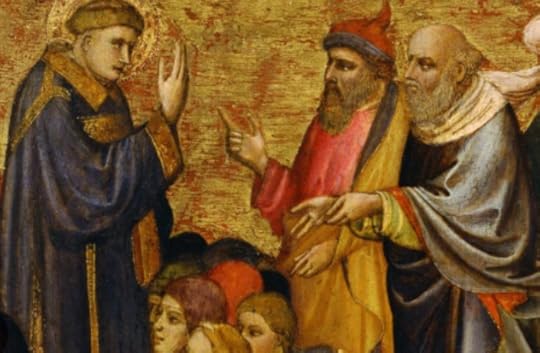 PMW 2024-069 by Kenneth L. Gentry, Jr.
PMW 2024-069 by Kenneth L. Gentry, Jr.
I am pressing on in a study of the two witnesses of Revelation (see previous entries). Adding to the previous study I now would point out that not long after Paul’s introduction in Acts (Ac 8:1), he quickly becomes its leading character (Ac 9:1ff). And though he will be the missionary to the Gentiles (Ac 13:46; 14:27; 15:7; 18:6; 22:21; 28:28; Ro 1:5; 11:13; 15:16; Gal 1:16; 2:2, 8; Col 1:27; 1Ti 2:7; 2Ti 4:17), everywhere Paul goes on his Mediterranean mission, even when taken to Rome in chains, he seeks out the local Jewish community to convince its membership that Jesus is their Messiah (13:4; 14:1; 16:13; 17:2–3; 28:23). Regarding the last chapters of Acts, it has been stated: “it has often been observed that in Luke’s narrative world Paul’s arrival in Rome takes place within the period of ‘testimony’ [maturia] in which, like Jesus himself, his followers are hauled before the ‘kings and governors’ (e.g., Agrippa, 25:23-26, 32; Festus, 25:1-12).”
After Saul the persecutor of Christians becomes Paul the proclaimer of Christ (Ac 9), Herod Agrippa I beheads James (the brother of John) in Ac 12:1–2. Though no reason is given (other than “he saw that it pleased the Jews,” Ac 12:3), during the Lord’s earthly ministry he and his brother John want to call fire down upon the Jewish cities who resist his message (Lk 9:54). And since he is one of the original hearers of Christ’s Olivet Discourse against the temple (Mk 13:3), he surely preaches against the temple himself. Later in Ac 13 the Holy Spirit sets apart two men (13:2; Saul [Paul] and Barnabas) for a similar witness to the diaspora Jews (13:5, 14–17, 26–44) — and with similar results (13:44–46a). There Paul announces: “we are turning to the Gentiles” (13:46b–47), because of the Jewish resistance (13:45). Just as Christ commands his prophets to shake off the dust of their feet in testimony against rebellious Israel (Lk 10:11; 9:5; Mt 10:14), Paul and Barnabas do so (Ac 13:51). As the enemies of Christ, the Jews will be (spiritually) bowed down to lick the dust of their feet (cf. Ps 72:9; Isa 49:23; Mic 7:17; cp. Rev. 3:9).
Among the earliest NT documents are Paul’s Thessalonian epistles (AD 50-51). In 1Th 2:14–16 Paul condemns the Jews for killing Christ and hindering the apostles “with the result that they always fill up the measure of their sins.” He alludes to AD 70 and the destruction of the temple when he asserts “wrath has come upon them to the utmost” (cp. Mt 23:32, 34, 38-24:2). As noted by one NT scholar: Paul “might well have thought that total war between Rome and Israel was about to break out” even as he writes (cf. J.W. 2:11:6–12:1 §222–27). Later the Jews also charge him with speaking against the temple (Ac 21:28; 25:8), which troubles his friends who warn him not to go to Jerusalem (Ac 21:4, 10–11).
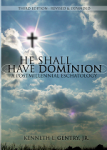
He Shall Have Dominion
(paperback by Kenneth Gentry)
A classic, thorough explanation and defense of postmillennialism (600+ pages). Complete with several chapters answering specific objections.
See more study materials at: www.KennethGentry.com
After the record in Acts James the Just (not John’s brother) is slain in Jerusalem in AD 62 because of his declaring “with a loud voice, ‘Why do ye ask me concerning Jesus, the Son of Man? He himself is sitting in heaven at the right hand of the great power, and is about to come [mellei erxesthai, i.e., soon] upon the clouds of heaven’” (Eccl. Hist. 2:23:14; cp. 4:22; Recog. 1:66-70). This language not only asserts Jesus’ deity, but the temple’s destruction (cp. 1:7; Mt 24:30 //; 26:64–66). Consequently, the Jews throw James off the pinnacle of the temple with the result that “he became a true witness [martus], both to Jews and Greeks, that Jesus is the Christ. And immediately [euthus] Vespasian besieged them” (Eccl. Hist. 2:23:18).
Some argue that “the predictions of the destruction of Jerusalem have a natural Sitz im Leben in the missionary preaching of the church to the inhabitants of the city,” so that “the theme of the destruction of Jerusalem . . . must have been an important part of the preaching of the early church.” Other scholars agree, noting: “The prophecy of Jesus that he would destroy the temple was one of the elements of the faith and message of the Jerusalem Church, cf. Acts 6:14.” We should realize that though the Gospels are dealing with issues occurring pre-AD 30, much earlier than AD 70, they are written closer to the AD 70 era and are being read and preached during that time.
So here in Revelation 11:3ff John is presenting the matter of Jerusalem’s judgment in a court drama requiring the appropriate “two witnesses.” Based on a comparison of Revelation 11 with Jer 4–6, Alan Beagley presents the basic idea regarding the two witnesses: “All this suggests that John’s description of the ministry of the witnesses may well be intended to signify that their message was one of judgment on Jerusalem and the nation of Israel.”
To be continued, unless Kamala Harris is speaking on the radio. Then I would set aside time to listen to her to see if I can figure what in the world she it talking about. Word salads are often a lot of fun.
Click on the following images for more information on these studies:
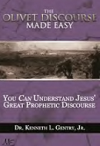

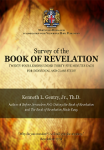
August 30, 2024
INTRODUCING THE TWO WITNESSES (3)
 PMW 2024-068 by Kenneth L. Gentry, Jr.
PMW 2024-068 by Kenneth L. Gentry, Jr.
I am continuing a study begun two issues ago on the two witnesses of Revelation. I will not be dealing with every aspect of their sudden appearance Revelation, but will be defining who they are in the context of the flow of redemptive history.
Not only does Jesus teach that the temple is doomed to destruction but that he is replacing it and its ceremonies in himself. And the early church emphasizes this message by recording it in the Gospels, then publishing, circulating, reading, and preaching it before the destruction of the temple in AD 70, either by means of prominent logia or in one or more of the final Gospels themselves released before that date. Jesus strongly asserts his own authority over the temple (Jn 2:14–17; Mt 21:12–17//) and equates his body with it (Jn 2:19–21). He declares that God now dwells (“tabernacles,” eskēnōsen) in him (Jn 1:14) and that he is “greater than the temple” (Mt 12:6).
He also diminishes the temple’s role in declaring that loving God and neighbor “is much more than all burnt offerings and sacrifices” (Mk 12:22). He authoritatively declares the leper cleansed (Mk 1:40-45), instead of directing him to go to the priests to secure cleansing (Lev 14:2ff). He does not even pay the temple tax, except on the occasion when temple authorities confront him about the matter (Mt 17:24–26). And then he does so only to avoid offense (Mt 17:27). In that context Jesus’ declaration that ‘the sons are free’ thus appears to have provided an unmistakable declaration of independence from the Temple and the attendant political-economic-religious establishment. Against the ceremonial prohibitions he touches the unclean woman, but is not made unclean himself (Mk 5:25–34; cp. Lev 5:2–3) and declares that food does not make one unclean (Mk 7:15; cp. Lev 11:4ff).
Jesus’ testimony against the temple also fits well in Luke’s narrative history in Acts. That work opens with Christ sending “witnesses” to “Jerusalem, and in all Judea” — and to the diaspora Jews (as well as to the Gentiles, Ac 1:8). In Acts Luke prominently presents Stephen as a model witness in Jerusalem (Ac 6:7–8). Most scholars note that Luke intentionally parallels in many respects the story of Stephen with that of Jesus.
In Stephen’s case, the Jews (6:9) charge him before the elders (6:12), Sanhedrin (6:12, 15), and the high priest (7:1) complaining that he “incessantly [ou pauetai] speaks against this holy place, and the Law,” and they blame his preaching on Jesus: “for we have heard him say that this Nazarene, Jesus, will destroy this place and alter the customs which Moses handed down to us” (Ac 6:13-14; cp. 7:48). This is significant in that as a representative of the Jerusalem church, he was teaching that since the death of Jesus, which he considered a crime perpetrated by the temple authorities (v. 52; cf. Ac. 2:23; 4:10; 5:30), the temple not only lost its place and validity in God’s redemptive purpose, but was doomed to destruction.
Have We Missed the Second Coming: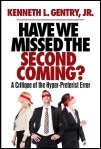
A Critique of the Hyper-preterist Error
by Ken Gentry
This book offers a brief introduction, summary, and critique of Hyper-preterism. Don’t let your church and Christian friends be blindfolded to this new error. To be forewarned is to be forearmed.
For more Christian educational materials: www.KennethGentry.com
Stephen undermines the temple by effectively arguing that the God of Israel is not tied to the land. He shows this by one example after another as God’s revelatory acts occur outside the Land: in Mesopatamia (Ac 7:2), Haran (7:4), Egypt (7:11, 17ff), Shechem (7:16), Midian (7:29), Mount Sinai (7:30), and the wilderness (7:38). Regarding the reaction of the chief priest against Jesus: The teachings and actions of Jesus, especially regarding the Temple, were probably viewed as a challenge to the established order. This is very clear in Jn 11:48 where the Sanhedrin worries: “If we let Him go on like this, all men will believe in Him, and the Romans will come and take away both our place and our nation.”
Luke emphasizes Stephen’s defense by making it the longest recorded discourse in Acts (Ac 7:2–53), one that is given by a man highly esteemed in Israel (6:5, 8, 10, 15; 7:55–56, 60; 8:2). In Luke’s narrative flow, Stephen’s message and martyrdom set the stage for the Jewish persecution of Christianity immediately to follow (7:58–8:1; 22:20). As one scholar notes: “to this point the Church itself had been localized in Jerusalem, impeding progress on the fulfillment of the Great Commission (Acts 1:8). It is only after Stephen’s speech and martyrdom that the Word of God is finally extended beyond Judea.” His message serves as “evidence for early Christian beliefs” (Cole 1950: 33), including their topic of proclamation.
As one scholar puts it: Stephen’s importance to the author of Acts is manifest: the speech credited to him is the longest in a book of speeches; his death precipitates the outward movement of the gospel from Jerusalem (a leitmotiv of Acts); and he is ennobled as the church’s first martyr, one whose death is patterned after the passion of Jesus himself. Indeed, Stephen’s message introduces Acts’ narrative movement away from Jerusalem to the rest of the world, for in Ac 8 the gospel next moves into Samaria. Thus, his sermon — which is his defense against charges relating to his resistance of the temple (6:13–14) — specifically rejects the temple (Ac 7:47–49) and serves as a theological introduction to Luke’s narrative of the Gentile mission. That is, it gives the reason that the church must eventually turn from the Jews to the Gentiles.
To be continued, if the proverbial creek (or even the literal one) does not rise.
Click on the following images for more information on these studies:
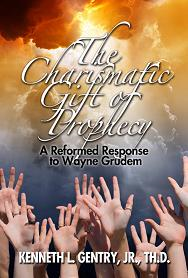
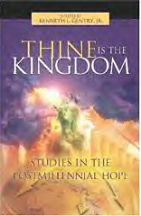
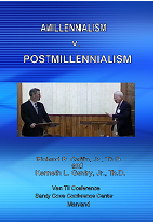
August 27, 2024
INTRODUCING THE TWO WITNESSES (2)
 PMW 2024-067 by Kenneth L. Gentry, Jr.
PMW 2024-067 by Kenneth L. Gentry, Jr.
I am continuing my introduction to the mysterious “two witnesses” of Revelation 11. This article should be read in conjunction with the preceding, which it continues. After noting first that the overall drift of Revelation expects their appearance, we must now note:
Second, John records their ministry immediately after Christ prohibits him from measuring the temple, directs him to cast it out, and explains that its host city will be “tread underfoot” (11:2). And once again I would note that their ministry covers the same time period as the temple’s treading (11:2, 3). Their witness is so strongly linked with the period of God’s judgment on Jerusalem and the temple that it must be dealing with that event.
Third, as noted above, Jesus specifically calls these two prophets in Jerusalem (11:8) “my two witnesses” (11:3). This strongly suggests that they preach the same message as Christ in this book which is, in fact, “the revelation of Jesus Christ” (1:1). Due to their redemptive-historical significance, I will spend more time on this point than that of the preceding two and the following five.
Christ’s original ministerial introduction to Israel anticipates her judgment. We see this in John the Baptist who is the first “witness” to Christ as the Lord’s ministry begins (Jn 1:7–8, 15, 32, 34). As he introduces Jesus (Mt 3:11, 13–14; Jn 1:15–37) the Baptist himself warns of approaching divine wrath upon Israel (Mt 3:7, 10–12), warning regarding Christ’s coming that “His winnowing fork is in His hand, and He will thoroughly clear His threshing floor; and He will gather His wheat into the barn, but He will burn up the chaff with unquenchable fire” (Mt 3:12). He even calls the Jewish people out of Jerusalem into the wilderness to repent (Mt 3:1–5), thereby effecting a reverse exodus — as if Jerusalem is a new Egypt from which they must flee (cp. Rev. 11:8; 18:4). And he turns down Israel’s religious leaders, the Pharisees and Sadducees, demanding that they “bring forth fruit in keeping with repentance” instead of basking in their pride supposing “that you can say to yourselves, ‘We have Abraham for our father’” (Mt 3:7–9; cp. the significance of 2:9; 3:9). We may even surmise that the two prophets preach the same sort of message as John Baptist (Mt 3:3, 7, 12 ) in that both he and they are modeled on Elijah (Mt 11:14; Rev. 11:6). In fact, in a later conflict with the chief priests regarding the temple, Jesus mentions John Baptist’s ministry (Mt 21:24–25).
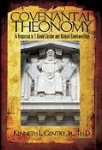
Covenantal Theonomy
(by Ken Gentry)
A defense of theonomic ethics against a leading Reformed critic. Engages many of the leading objections to theonomy.
See more study materials at: www.KennethGentry.com
More significantly even, Christ himself frequently speaks of Israel’s judgment, starting at the very opening (Jn 2:11) of his own ministry (Jn 2:19), continuing throughout it (Mt 8:11–12; 10:15; 11:22, 24), and as he concludes it (Mt 21:18–22, 33–46; 22:1–14; 23:31–24:34). The Lord prepares his newly-ordained apostles (Mt 10:1–2) for witnessing against Israel, then sends them to function as prophets: “These twelve Jesus sent out after instructing them: ‘Do not go in the way of the Gentiles, and do not enter any city of the Samaritans; but rather go to the lost sheep of the house of Israel. And as you go, preach, saying, “The kingdom of heaven is at hand”. . . . Whoever does not receive you, nor heed your words, as you go out of that house or that city, shake the dust off your feet. Truly I say to you, it will be more tolerable for the land of Sodom and Gomorrah in the day of judgment than for that city’” (Mt 10:5–7, 14–15; cp. Ac 2:32; 3:15; 5:32; 10:39; 13:31; 22:20).
In fact, Jesus warns them: “Beware of men; for they will deliver you up to the courts [sunedria, Jewish courts], and scourge you in their synagogues [involving judicial process, e.g., Jn 16:2; Ac 9:2; 22:19; 26:11] and you shall even be brought before governors and kings [Roman judicial authorities overseeing Israel] for My sake, as a testimony [marturion] to them and to the Gentiles” (Mt 10:17–18; cp. Mk 6:11). In warning them that Israel will resist their witness, he promises that he will come in judgment against her before they finish their ministry (i.e., in AD 70): “But whenever they persecute you in one city, flee to the next; for truly I say to you, you will not finish going through the cities of Israel until the Son of Man comes” (Mt 10:23). This is surely why he sends out his disciples “in pairs”: to serve as legal witnesses (Mk 6:7; Lk 10:1).
Israel will fill up the measure of her sins (Mt 23:32; 1Th 2:16) in that she is known for killing her prophets. And she will kill again after Christ (Acts passim; 1Th 2:14–16; Heb 10:32–36). Not long before Israel finally rejects him, Jesus chastises Jerusalem with these words: “Therefore, behold, I am sending you prophets and wise men and scribes; some of them you will kill and crucify, and some of them you will scourge in your synagogues, and persecute from city to city, that upon you may fall the guilt of all the righteous blood shed on earth, from the blood of righteous Abel to the blood of Zechariah, the son of Berechiah, whom you murdered between the temple and the altar” (Mt 23:34–35; cp. Ac 5:40; 22:19; 26:11). Significantly, in Mt 27:40 the Jerusalem crowds taunt him as he hangs on the cross: “You who are going to destroy the temple and rebuild it in three days, save Yourself!” This jeer employs present participles: ho kataluōn = “the one destroying [the temple]” and oikodomōn = “building [it again].” This grammatical form may suggest that he repeatedly declares the temple’s destruction. Such is clearly charged against Stephen when they claim that he “incessantly speaks against this holy place” (Ac 6:13–14).

As It Is Written: The Genesis Account Literal or Literary?
Book by Ken Gentry
Presents the exegetical evidence for Six-day Creation and against the Framework Hypothesis. Strong presentation and rebuttal to the Framework Hypothesis, while demonstrating and defending the Six-day Creation interpretation.
See more study materials at: www.KennethGentry.com
In his Gospel, John repeatedly (45x) uses the mart- word group (which means “witness/testify”), and often against Israel (see his opening, Jn 1:7–11, 15, 19–27, 32–34). He even moves toward his closing with these words: “This is the disciple who bears witness of these things, and wrote these things; and we know that his witness is true” (Jn 21:24; cp. Rev. 22:6–8). John emphasizes (uniquely in the Gospels) that Christ personally confronts Israel with a two-fold witness: “If I alone bear witness of Myself, My testimony is not true. There is another who bears witness of Me, and I know that the testimony which He bears of Me is true” (Jn 5:31– 32). “But even if I do judge, My judgment is true; for I am not alone in it, but I and He who sent Me. Even in your law it has been written, that the testimony of two men is true. I am He who bears witness of Myself, and the Father who sent Me bears witness of Me” (Jn 8:16–18).
To be continued!
August 23, 2024
INTRODUCING THE TWO WITNESSES (1)
 PMW 2024-066 by Ken Gentry
PMW 2024-066 by Ken Gentry
The two witnesses of Revelation are a constant source of intrigue for readers of Revelation. Despite their brief appearance in John’s drama, I constantly receive questions about them by email and in conferences. This intrigue is largely due to John’s rather abruptly introducing them, despite not previously alluding to them: “I will grant authority to my two witnesses, and they will prophesy for twelve hundred and sixty days” (Rev. 11:3). We must understand the two witnesses’ redemptive-historical significance in pre-70 Jerusalem and their narrative function in John’s forensic drama.
The sudden appearance of these two as “witnesses” in Revelation should not be altogether surprising. After all, Revelation’s main movement begins with a vision of God on his judicial throne (4:1ff) which quickly focuses on a sealed document (Rev. 5), the opening of which initiates the dramatic judgments to follow (Rev. 6). Revelation is a court drama.
Furthermore, in the first vision that opens the current interlude and vision set (10:1–11:14), Christ formally and dramatically swears an oath to God (10:5–6). In fact, Revelation is a book in which John himself “bore witness” (1:2, cp. 1:9) and in which witnesses frequently appear (2:13; 6:9; 12:11, 17; 17:6; 19:10; 20:4), including the chief witness, “the faithful witness” Jesus Christ (1:5; 3:14). The two witnesses here (11:3, 7a) are also “prophets” (11:3, 6, 10), just as John’s entire book is a “prophecy” (1:3; cp. 10:11; 22:10, 18-19). Whether or not we can identify these two witnesses in history (see discussion below), we must at least understand their prophetic witness in a “juridicial and religious” sense.
The two witnesses clearly bear a judicial significance in that: (1) John specifically and deliberately designates them as “witnesses” (martusin) immediately upon their appearing (11:3). (2) He presents us with two witnesses. According to biblical law, legal testimony in capital cases (such as in the case of the murderous, Jerusalem-harlot, 17:5–6; 18:24; 19:2) requires two witnesses (Nu 35:30; Dt 17:6; 19:15; 1Ki 21:10). And John is so committed to this symbolism that he must alter his Zec 4 source to establish this precise number. That is, he changes Zechariah’s one lampstand (Zec 4:2) into two (11:4) (see further discussion on the Zechariah backdrop below).
(3) He even states that these witnesses “stand before the Lord” (11:4), which signifies their standing in court. As one commentator argues: “the two witnesses bear their testimony not only in earthly courts but also in an unseen courtroom, as they are ‘standing before the Lord of the earth,’ intensifies the legal nature of the witness in verses 3–4.”

Blessed Is He Who Reads: A Primer on the Book of Revelation
By Larry E. Ball
A basic survey of Revelation from an orthodox, evangelical, and Reformed preterist perspective. Ball understands John to be focusing on the destruction of Jerusalem and the temple in AD 70. Insightful. Easy to read.
For more Christian studies see: www.KennethGentry.com
Unfortunately, nowhere in the two-witness pericope does John record the witnesses’ specific message. But it surely focuses on Christ, for they are “my two witnesses” (11:3). Yet they do not witness about him in general (that he came and preached to Israel) nor evangelistically (that he offers salvation to all who believe in him, as in 14:6). Rather, given the nature and purpose of Revelation, they surely bear the same witness that John does as he rejects the temple and declares its soon-coming judgment. Note the following suggestive evidence in this direction.
First, the overall drift of Revelation expects it: Revelation’s theme is Christ’s judgment coming against the tribes of the Land who pierce him (1:7). Thus, they appear in a book explaining and justifying Jerusalem’s judgment for ruthlessly crucifying Christ the faithful witness (1:7; cf. 5:6, 12; 13:8) and persecuting his followers (6:11; 11:5–8; 17:5–6; 19:2) who are “witnesses” (2:13; 6:9; 12:11, 17; 17:6; 19:10; 20:4). This focus should be evident in our context in that it specifically mentions the temple and its coming judgment (11:1–2; cf. 11:19), clearly draws from Christ’s teaching regarding its destruction (11:2; cp. Lk 21:24, cf. Lk 21:5–6), and has their witnessing transpiring in Jerusalem where the temple stands (11:8).
I will continue this study in my next posting.
Click on the following images for more information on these studies:



August 20, 2024
OBJECTIONS TO NERO
 PMW 2024-065 by Kenneth L. Gentry, Jr.
PMW 2024-065 by Kenneth L. Gentry, Jr.
Our study of 666 as a reference to Nero, though widely held, is not accepted by all scholars. There are certain problems that some see with the Nero designation. I will mention two of the major ones.
The Silence of Early Church Fathers
It is frequently argued that in one of the earliest treatments of Revelation 13 there is no mention of Nero as a likely candidate. The reference to which we refer was written by Irenaeus, Bishop of Lyons, around A.D. 180.
Not only does Irenaeus not mention Nero, but he mentions other possibilities: Euthanos, Laetinos, and Teitan. [1] If Nero was the actual meaning of the riddle, why did not Irenaeus know this, since he wrote about the matter 100 years later? Why do no other church fathers suggest it?
This would certainly appear to be a reasonable objection to our theory. In fact, it is the strongest argument against it. However, in the final analysis it cannot overthrow the positive evidence for the theory, for two reasons.
First, this argument is really a two-edged sword. The very fact that Irenaeus, writing just 100 years after Revelation, cannot be sure of the proper designation demonstrates that the true interpretation, whatever it was, had very quickly been lost. If this is true of Irenaeus in A.D. 180, it is certainly true of the later fathers.
Second, had Irenaeus offered with conviction and assurance a specific alternative, the case against the Nero theory would have been more seriously challenged. Interestingly, Irenaeus suggests the hopelessness of determining the proper understanding:
“It is therefore more certain, and less hazardous, to await the fulfillment of the prophecy, than to be making surmises, and casting about for any names that may present themselves, inasmuch as many names can be found possessing the number mentioned; and the same question will, after all, remain unsolved.” [2]
Irenaeus admits his own ignorance on the matter. How can that prove the Nero theory wrong? None of the later church fathers does more than guess at the solution. Did the riddle have no answer?
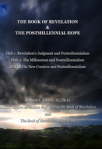 The Book of Revelation and Postmillennialism (Lectures by Ken Gentry)
The Book of Revelation and Postmillennialism (Lectures by Ken Gentry)
In the first of these three 50-minute lectures Gentry explains Revelation’s judgments to show they do not contradict postmillennialism. In the next two lectures he shows how the Millennium and the New Creation themes strongly support the gospel victory hope found in postmillennialism.
See more study materials at: www.KennethGentry.com
The Problem of the Hebrew Spelling
Some have argued that since John writes to Gentile churches in Asia Minor, the mechanics of deriving the name from its Hebrew spelling would be too difficult for the audience. Though reasonable at first glance, this objection also fails to undermine the Nero view.
First, although John wrote in Greek, Revelation has long been recognized as one of the more “Jewish” books of the New Testament. All technical commentaries on Hebrew recognize this.
For instance, in his commentary late-date proponent R. H. Charles included a major section entitled “A Short Grammar of the Apocalypse.”. Section 10 of this “Grammar” is entitled “The Hebraic Style of the Apocalypse”. [3] There Charles well notes that “while [John] writes in Greek, he thinks in Hebrew.” [4] As J. P. M. Sweet puts it:
“The probability is that the writer, thinking in Hebrew or Aramaic, consciously or unconsciously carried over Semitic idioms into his Greek, and that his ‘howlers’ are deliberate attempts to reproduce the grammar of classical Hebrew at certain points.” [5]
Second, in fact there are other very Hebraic names in Revelation. For instance, the Hebrew words “Abaddon” (Rev. 9:11) and “Armageddon” (Rev. 16:16) are carefully given Greek equivalents. The Hebrew word “Satan” is interpreted into Greek as “the devil” (Rev. 12:9).
Other Hebrew words appear, as well: “amen” is said to mean “truthfully” (Rev. 3:14). The Hebrew “hallelujah” is not even translated into a Greek equivalent (Rev. 19:1, 3 , 4, 6). How natural, it would seem, to adopt a Hebraic spelling for the basis of the cryptogram.
Third, Asia Minor was well populated by Jews. Late-date scholar H. B. Swete noted that “[l]ong before the Christian era the Jews had formed a considerable factor in the population of the Asian cities”. [6] Noted church historian Williston Walker writes of the Jews in the first century: “They were a notable part of the population of Alexandria. They were strongly rooted in Syria and Asia Minor . . . . Few cities of the empire were without their presence.” [7] The audience could well have been composed of at least a significant minority of Jews.
BEFORE JERUSALEM FELL
Doctoral dissertation defending a pre-AD 70 date for Revelation’s writing (459 pp; paperback). Thoroughly covers internal evidence from Revelation, external evidence from history, and objections to the early date by scholars.
For more study materials: https://www.kennethgentry.com/
And why should John not use an Hebraic riddle? Was not John himself a Jew? Was not he, the writer of Revelation, sent “to the circumcised” (Gal. 2:9)?
Despite the brevity of each of the Seven Letters, in them are prominent allusions to Jewish situations (Rev. 2:9, 14; 3:9). In the book itself are very definite allusions to Jewish matters, such as the twelve tribes of Israel (Rev. 7 and 14).
Conclusion
The role of Nero Caesar in Revelation is written large. As all roads lead to Rome, so do they all terminate at Nero Caesar’s palace. The factors pointing to Nero in Revelation are numerous and varied. It is difficult to discount the many ways in which Nero fits the expectations of Revelation. He is the only contemporary historical figure that can possibly fulfill all of the requirements. Contrary to some commentators who fear the that the key to Revelation’s “666” is lost, we suggest that the key is actually in the keyhole, the last place to look!
Surely Nero’s specter haunts the pages of Revelation. That being the case, we have a sure terminus for the book’s time of writing: June, A.D. 68 the year of Nero’s death. This fits well with all the other avenues explored thus far.
NOTES
1. Irenaeus, Against Heresies 5:30:3.
2. Against Heresies 5:30:3.
3. R. H. Charles, The Revelation of St. John (Edinburth: T and T Clark, 1929), 1:cxvii, cxlii.
4. Charles, Revelation, cxliii.
5. J. M. Sweet, Revelation (Philadelphia: Westminster, 1979), 16.
6. Swete, Revelation, lxvi.
7.Williston Walker, A History of the Christian Church (3rd ed: New York: Scribner’s, 1970), 16.
The Divorce of Israel: A Redemptive-Historical Interpretation of Revelation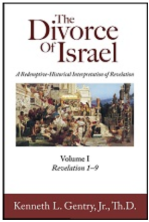
This long-awaited commentary has now been published. It is an 1800 page, two-volume deeply exegetical, academic commentary on the Bible’s most mysterious book.
Click: https://www.kennethgentry.com/the-divorce-of-israel-2-vols-by-gentry-pre-publication-offer/
See more study materials at: www.KennethGentry.com
August 16, 2024
THE WAR AGAINST THE SAINTS
 PMW 2024-064 by Kenneth L. Gentry, Jr.
PMW 2024-064 by Kenneth L. Gentry, Jr.
As I continue this study series on 666 and its application to Nero Caesar, we must now note that in the text the Beast is said to “make war with the saints and to overcome them” (Rev. 13:7). In fact, he is said to conduct such blasphemous warfare for a period of 42 months (Rev. 13:5).
Remarkably, the Neronic persecution of Christianity — the first and one of the most gruesome — lasted almost precisely that length of time. The persecution of Christianity by Nero began in the latter part of November, A.D. 64. It ended with the death of Nero, which occurred on the ninth of June, A.D. 68. [1] But for a few days, this represents a period of almost 42 months! How significant! Not only does Nero’s name fit the number of the Beast, but his persecution lasted the very time required by the Beast’s war against the saints.
The Character of the Beast
In Revelation 13 the one behind the 666 riddle is specifically designated a “beast.” The word for “beast” in Greek is therion, a term frequently used of “wild animals,” of “dangerous animals.” [2] Therion is often used of the wild, carnivorous animals employed in the cruel Roman arenas. [3] Because of its natural association, the term is often quite aptly used figuratively of persons with “a ‘bestial’ nature, beast, monster.” [4]
The Book of Revelation Made Easy
(by Ken Gentry)
Helpful introduction to Revelation presenting keys for interpreting. Also provides studies of basic issues in Revelation’s story-line.|
See more study materials at: www.KennethGentry.com
Now it is almost universally agreed that Nero was one who was possessed of a “bestial nature.” His bestial cruelty is evidenced in the writings of the Roman historian Suetonius.
Suetonius notes that Nero “compelled four hundred senators and six hundred Roman knights, some of whom were well to do and of unblemished reputation, to fight in the arena”. [5] Suetonius also notes that Nero was a sodomist (Nero 28) who is said to have castrated a boy named Sporus and married him (Nero 28, 29). He enjoyed homosexual rape (Nero 28) and torture (Nero 29). He killed his parents, brother, wife, aunt and many others close to him (Nero 33–35).
More particularly for Revelation’s purpose, Nero was the first of the imperial authorities to persecute Christianity, and that with the vilest evil and most horrendous fury. Tacitus records the scene in Rome when the persecution of Christians broke out:
“So, to dispel the report, [Nero] substituted as the guilty persons and inflicted unheard-of punishments on those who, detested for their abominable crimes, were vulgarly called Christians. . . . And their death was aggravated with mockeries, insomuch that, wrapped in the hides of wild beasts, they were torn to pieces by dogs, or fastened to crosses to be set on fire, that when the darkness fell they might be burned to illuminate the night. . . . Whence it came about that, though the victims were guilty and deserved the most exemplary punishment, a sense of pity was aroused by the feeling that they were sacrificed not on the altar of public interest, but to satisfy the cruelty of one man.” [6]
The second century writer, Apollonius of Tyana, specifically called Nero a “beast”:
“In my travels, which have been wider than ever man yet accomplished, I have seen many, many wild beasts of Arabia and India; but this beast, that is commonly called a Tyrant, I know no how many heads it has, nor if it be crooked of claw, and armed with horrible fangs. . . . And of wild beasts you cannot say that they were ever known to eat their own mother, but Nero has gorged himself on this diet.” [7]
In Sibylline Oracles 8:157 (A.D. 175) Nero is fearfully designated a “great beast.”

Blessed Is He Who Reads: A Primer on the Book of Revelation
By Larry E. Ball
A basic survey of Revelation from an orthodox, evangelical, and Reformed preterist perspective. Ball understands John to be focusing on the destruction of Jerusalem and the temple in AD 70. Insightful. Easy to read.
For more Christian studies see: www.KennethGentry.com
The fourth century Christian writer Lactantius, speaks of him as “an execrable and pernicious tyrant” and a “noxious wild beast.” [8] The fourth century church historian Eusebius writes of him as one possessed of “extraordinary madness, under the influence of which, [he] . . . accomplished the destruction of so many myriads without any reason.” [9]
NOTES
1. Moses Stuart, Commentary on the Apocalypse (Andover: Allen, Morrill and Wardwell, 1845), 2:469. See also: Justo L. Gonzalez, The Early Church to the Dawn of the Reformation (San Francisco: Harper and Row, 1984), 36.
2. Arndt-Gingrich, Lexicon, p. 361. In Lev. 26:6 the beasts of the land are symbolic of evil; in Lev. 26:22 God promises their return to plague Israel and to bereave her of her children if she is unfaithful to the covenant. Messianic blessedness vanquishes the evil beasts (Isa. 11:6-9; Eze. 34:25).
3. Josephus, Wars, 7:38; Martyrdom of Polycarp, 2:4; 3ff.; 11:1ff; Ignatius, Romans 4:1ff; 5:3; Smyrnaens 4:2; Diognetus 7:7; Hermas, Visions 3:2:1.
4. Arndt-Gingrich, Lexicon, 361.
5. Nero 12.
6. Annals 15:44.
7. Philostratus, Life of Apollonius 4:38.
8. Lactantius, Of the Manner in Which the Persecutors Died, 3 (see: ANF 7:302).
9. Eusebius, Ecclesiastical History, 2:25:2.
August 13, 2024
616?
 PMW 2024-063 by Kenneth L. Gentry, Jr.
PMW 2024-063 by Kenneth L. Gentry, Jr.
This is my third study in a brief series on the number 666 found in Revelation 13:18 (and on many cash register receipts found in the pockets of people in emergency rooms, who had a heart attack when they were startled to find their store receipt with this precise figure!)
The Textual Variant 616
If you have a Bible with marginal references you will notice something of interest regarding Revelation 13:18. Your reference may say something to the effect: “Some manuscripts read 616.” The fact is that the number 666 in some ancient versions of Scripture is actually changed to 616. But why? Was it changed accidentally, or on purpose?
It surely was no accident. The numbers 666 and 616 are not even similar in the original Greek — whether spelled out in words or written out as numerals. There is no way a copiest could confuse the two. As textual scholars agree, it must be intentional.[1] But again we ask, Why?
Although we cannot be absolutely certain, a strong and most reasonable case may be made for the following conjecture. John, a Jew, used a Hebrew spelling of Nero’s name in order to arrive at the figure 666. When Revelation began circulating among those less acquainted with Hebrew, a well-meaning copiest might have intended to make the deciphering of the number easier. It surely is no mere coincidence that 616 is the numerical value of “Nero Caesar,” when spelled in Hebrew by transliterating it from its more common Latin spelling.
[image error]For more information and to order click here.
God Gave Wine (by Ken Gentry)
A biblical defense of moderate alcohol consumption. Considers all key biblical passages and engages the leading objections.
See more study materials at: www.KennethGentry.com
Such a conjecture would satisfactorily explain the rationale for the divergence: so that the non-Hebrew mind might more readily discern the identity of the Beast. Even late-date advocate Donald Guthrie, who rejects the Nero theory, grants that this variant gives the designation Nero “a distinct advantage.” [2]
And as renowned Greek scholar Bruce Metzger says:
“Perhaps the change was intentional, seeing that the Greek form Neron Caesar written in Hebrew characters (nrwn qsr) is equivalent to 666, whereas the Latin form Nero Caesar (nrw qsr) is equivalent to 616.” [3]
Such a possibility offers a remarkable confirmation of the designation of Nero.
NOTES
1. Bruce M. Metzger, A Textual Commentary on the Greek New Testament (London: United Bible Societies, 1971), 751–752.
2. Donald B. Guthrie, New Testament Introduction (3rd ed.: Downer’s Grove, Ill: Inter-varsity Press, 1970), 959.
3. Metzger, Textual Commentary, 752.

As It Is Written: The Genesis Account Literal or Literary?
Book by Ken Gentry
Presents the exegetical evidence for Six-day Creation and against the Framework Hypothesis. Strong presentation and rebuttal to the Framework Hypothesis, while demonstrating and defending the Six-day Creation interpretation.
See more study materials at: www.KennethGentry.com
August 9, 2024
666 AND DUAL IMAGERY
 PMW 2024-062 by Kenneth L. Gentry, Jr.
PMW 2024-062 by Kenneth L. Gentry, Jr.
This is the second in a series on the infamous number 666, which is found in Revelation 13:18 (and, though this is irrelevant, also in 1 Kings 10:14; 2 Chron. 9:13; and Ezra 2:13). As we continue our study on this number, we must note the issue of:
Dual Imagery
In fact, before we actually point to the one indicated by John’s number, a widely recognized problem associated with the Beast imagery must be mentioned. Almost all commentators agree that the Beast imagery in Revelation shifts between the generic and the specific. That is, sometimes the Beast seems to picture a kingdom, sometimes a particular, individual king of that kingdom. [1]
The Beast of Revelation 13:1 and 17:1 has seven heads, which represent seven individual kings (Rev. 17:10). Thus, the Beast seems to be the kingdom in general. Yet at other times, the Beast is spoken of as if a specific individual. His number is the number of “a man” (Rev. 13:18). The beast is said to be one of his own heads (Rev. 17:11). The generic and specific are merged in Revelation 13:3 where the Beast as a whole is said to die when one of his heads dies, and he is said to come back to life when that head comes back to life (Rev. 13:3).
Identifying 666
In that we have already identified the sixth king as Nero Caesar, Nero’s name should at least be in the field of contention for the coded 666. [2] It goes without saying that he fits within the parameters of the textually derived principles stated above. We will show that, as a matter of fact, Nero is indicated by this mysterious number. Several lines of evidence converge on Nero, compelling our choice of him as the candidate.
THE APOCALYPSE OF JOHN
by Milton S. Terry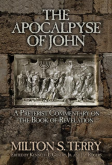
This book is Terry’s preterist commentary on the Book of Revelation. It was originally the last half of his much larger work, Biblical Apocalyptics. It is deeply-exegetical, tightly-argued, and clearly-presented.
For more study materials: https://www.kennethgentry.com/
Nero’s Number
Of course, the necessary condition for a candidate is that his name fit the riddle. It has been documented by archaeological finds that a first century Hebrew spelling of Nero’s name provides us with precisely the value of 666. [3] A Hebrew spelling of his name was Nrwn Qsr (pronounced: Neron Kaiser).
A great number of biblical scholars recognize this name as the solution to the problem.
Is it not remarkable that this most relevant emperor has a name that fits precisely the required sum? Is this sheer historical accident? But there is more. (At least I hope so. I have got to write some more articles!)
Four Views on the Book of Revelation
(ed. by Marvin Pate)
Helpful presentation of four approaches to Revelation. Ken Gentry writes the chapter on the preterist approach to Revelation, which provides a 50 page survey of Revelation .
See more study materials at: www.KennethGentry.com
NOTES
1. This dual reference is even recognized by dispensational commentators, see John F. Walvoord, The Revelation of Jesus Christ (Chicago: Moody, 1966), 97ff.
2. It should not escape our notice that both numbers involve the number 6: the sixth king and the number of the beast, 666.
3. D. R. Hillers, “Revelation 13:18 and A Scroll from Murabba’at,” Bulletin of the American Schools of Oriental Research 170 (April, 1963) 65. The evidence may be seen by consulting the French work edited by P. Benoit, J. T. Milik, and R. DeVaux, Discoveries in the Judean Desert of Jordan II (Oxford, 1961), p. 18, plate 29.
Kenneth L. Gentry Jr.'s Blog
- Kenneth L. Gentry Jr.'s profile
- 85 followers



